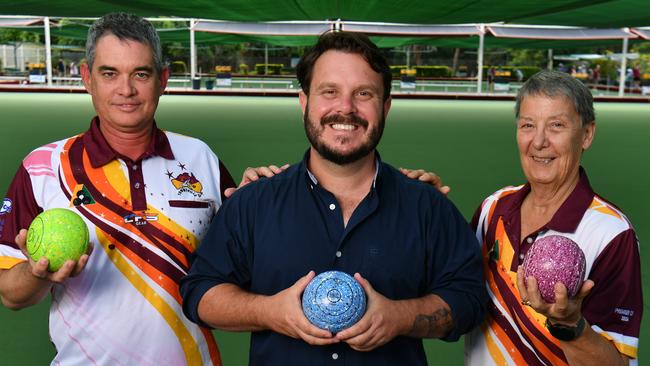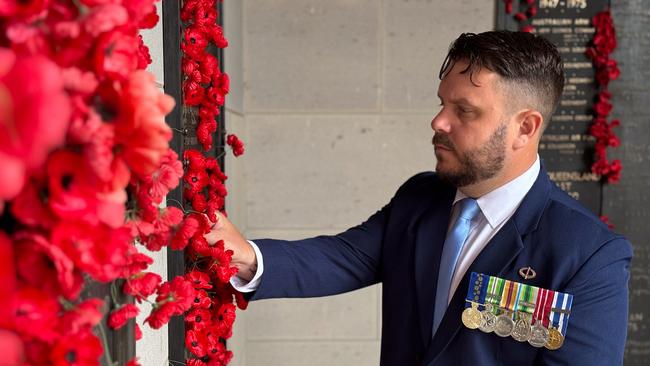Liberals lament their broken heartland and seek solace in the Sunshine State
The Liberal Party’s top voter hotspot is now literally 1000 miles from where you would expect it to be.

For so long, Sydney’s upper north shore, sometimes its northwestern fringe and occasionally its beachside electorates laid claim to having the strongest concentration of Liberal voters anywhere in the country.
But after the upheaval of the past two federal elections, the surrender of traditional heartlands and demoralising defeats in one-time prime ministerial bases, the Liberal Party’s top voter hotspot is literally 1000 miles from where you would expect it to be.
The Townsville-based seat of Herbert – held by Labor as recently as two parliamentary terms ago and an ALP stronghold at a state level until last year’s Queensland election – is now the safest Liberal electorate in the country.
Forget Bradfield, the strongest Liberal-voting seat at almost every election from 1951 to 1998. The blue-ribbon electorate might even become the latest to turn teal once the Australian Electoral Commission completes a likely mandatory recount, with Liberal Gisele Kapterian ahead by just eight votes on the latest counting.
You can also forget Mitchell, where Labor and the Greens have taken about a quarter of Liberal MP Alex Hawke’s primary votes over the past two elections, and Cook, formerly held by Scott Morrison and the party’s strongest seat at the 2019 and 2022 elections.
Now Phillip Thompson, a former 1RAR soldier and popular local member, has claimed the mantle. He reclaimed Herbert for the Liberals in 2019 and has built up his primary vote at the two subsequent elections to 48.7 per cent. After preferences, his margin of 13.4 per cent is the Liberals’ largest in the country.
But Townsville is hardly classic Liberal territory.
The peak age group in Herbert – named after Robert Herbert, the first premier of Queensland and, at 28, the youngest person to lead any Australian state government – is the 20-24-year-olds.
Only one in six has a higher education degree, household incomes are a touch below the national average, and renters outnumber both homeowners and mortgage holders, according to the most recent census data.
Almost four out of five residents of Herbert were born in Australia and hospital worker tops the list of occupations. With Townsville home to both army and air force bases, its second-highest occupation type is defence worker.

Mr Thompson, who served in the army from 2006-11, was director of the Royal Australian Regiment Corp from 2016-19 and received a Medal of the Order of Australia in 2018, bucked the anti-Liberal trend in Queensland – and nationwide on May 3. He increased his vote by almost two percentage points both before and after preferences, leaving him with a margin unfamiliar to most of his predecessors in a seat that fell into the AEC category of “marginal” (under 6 per cent) at 17 out of 23 elections from 1958 to 2016.
Renowned for delivering nailbiters, the voters of Herbert have produced three extremely close results in recent times. Labor’s Cathy O’Toole won by just 37 votes in 2016 and Liberal Peter Lindsay faced two prolonged waits for a result – in 1998 and 2007 – winning by 150 and 343 votes respectively.
While Mr Thompson has safeguarded a seat where the Liberal Party has had mixed results, the fact his was its highest primary vote highlights the fact it failed on May 3 to win a single seat on first preferences alone for the first time at a federal election since the party was established in 1944.
Achieving primary vote percentage totals in the 70s was commonplace in the safest Liberal seats from 1949 to 1987, particularly for successive Bradfield MPs Harry Turner and David Connolly. But the party’s best results drifted down to the 60s from 1990 to 2019, before plunging to the 50s in 2022 – and now the 40s.
Extraordinarily, 42 MPs – 34 Labor, five Nationals and three crossbenchers – recorded larger two-party-preferred margins than Mr Thompson as the best Liberal.
In an illustration of the fracturing of the Liberal vote, after Mr Thompson in Herbert, the next most successful Liberals on primary votes were backbenchers Tony Pasin in the rural South Australian seat of Barker and Simon Kennedy, who took over Mr Morrison’s southern Sydney seat of Cook but wore a swing of almost 6 per cent against him.
So widespread have the Liberals’ defeats been, they no longer hold many of the seats once held by the party’s former prime ministers, and have lost many held by other leaders, deputy leaders and treasurers. Lost are Kooyong (Robert Menzies, Andrew Peacock and Josh Frydenberg); Bruce (Billy Snedden); Mayo (Alexander Downer); Bennelong (John Howard); Warringah (Tony Abbott); Wentworth (Malcolm Turnbull), and; Dickson (Peter Dutton). Three others – Higgins (Harold Holt, John Gorton and Peter Costello), Lowe (Billy McMahon) and North Sydney (Joe Hockey) – were also lost before they were abolished.
The rout of the Liberals has been particularly hard-felt in capital cities, with only six of their guaranteed 28 remaining lower house MPs – seven of 29 if Ms Kapterian can win Bradfield – holding a seat the AEC classifies as metropolitan. Four are in Sydney (five with a win in Bradfield), one in Melbourne and one in Brisbane.
The party is guaranteed only six of the 46 seats in NSW and six of 38 in Victoria. Ten of the remaining Liberals come from Queensland, four from Western Australia and two from South Australia.
Since the Liberal Party was formed in 1944, only eight seats have recorded the highest Liberal primary vote at an election. Bradfield tops the list 16 times, followed by Mitchell, which used to stretch into Sydney’s rural outskirts and beyond (three times), Cook (twice) and Warringah, Wentworth and Perth’s Curtin (once each).
The traditionally Nationals seat of Murray, which the Liberals took in a three-cornered contest in 1996, had the highest Liberal primary vote in four straight elections from 2001 to 2010 before returning to the Nationals in 2016 on Sharman Stone’s retirement. In those four elections, the highest-polling Liberal seats were Bradfield twice, Curtin and the Gold Coast seat of Moncrieff (once each).
The Liberal seats with the highest primary vote at the 1954 and 1955 elections are unknown because many of the Menzies government’s safest seats were not contested by any other candidates.




To join the conversation, please log in. Don't have an account? Register
Join the conversation, you are commenting as Logout